The jab may be one of the most important punches in boxing. In fact, jabs make up two-thirds of the total punches thrown in elite amateur boxing [5]! Safe to say, learning how to throw a powerful jab is likely to be one key to boxing success.
To perform a power jab/left jolt both Jack Dempsey and the research agree; the key events are a lead step forward that allows for the body’s momentum to carry forward into the target (whether an active drive or a falling step) and a braced lead arm that transmits that momentum into the target.
It seems the new research on throwing powerful jabs aligns with what Jack Dempsey has been saying all along. So let’s break this down.
Jack Dempsey Was Right About Throwing A Powerful Jab
Jack Dempsey, besides being one of the greatest heavyweight boxers of all time, wrote one of the most important books on the sport ever. Published in 1950, his book Championship Boxing: Explosive Punching and Aggressive Defence [1], is as relevant today as it was seventy years ago.
While styles, equipment, and rule changes have altered boxing immensely since Dempsey’s heyday in the 1920s, the fundamental lessons found in his work are as true as ever.
Discover The Little Known Secrets For Unlocking Devastating KO Power!
Heavy hands are built doing these things...
As a sports scientist, I spent the latter half of the 2010s researching punching performance in boxers [2]. Without a doubt, Dempsey influenced my work, but as a young Ph.D. student, I was convinced that I was going to revolutionize the sport by unlocking the secrets of how to punch…
Long story short, Dempsey was right.
My results so closely aligned with Dempsey’s writings that it was almost frustrating. Obviously looking back now I see the value in confirming the works of a master, but at the time, I developed a bit of a grudge towards the old man.
One word of warning before jumping into how research “proved” Dempsey right. I am a firm believer that there is no one way to throw a punch.
I do believe that there are key events that should occur during a punch to make it effective (for example – a weight shift from the rear to lead legs during a cross or pre-loading the lead leg on a left hook), but within that framework, there are athlete and context-specific influences which make it impossible to say “this is the way you HAVE to punch”.
With that caveat, let’s look at Dempsey’s view on the power jab and what sports science has to say.
Dempsey was not a big fan of what he called the jab. For him, using a quick lead hand strike to manage range, set up attacks, and develop a defensive framework was a waste of time.
He viewed feints as a more effective tool for many of these actions than the jab.
Although, in Dempsey’s case it is easier to rely on feints when the whole planet fears your knockout power and swarming offense. He also disliked the jab due to what he called the “defensive fallacy” which meant that every time you threw a jab to defend, you left yourself open for a counter.
In Dempsey’s mind, if you were going to put yourself in danger of a counter you might as well try to take your opponent’s head off in the process.
In his book, he downplayed the jab and instead recommend the use of the “left jolt”, which is known more commonly today as the power jab.
Thrown from long range, the left jolt/power jab is a useful punch as the closer distance of the lead hand to an opponent can allow for quick punishing punches that close distance and sets up an aggressive follow-up.
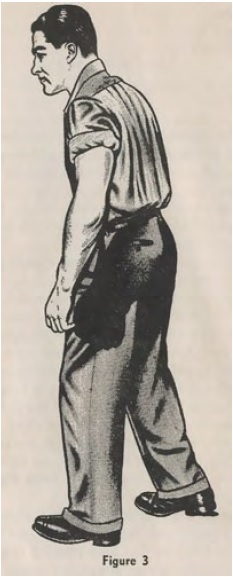
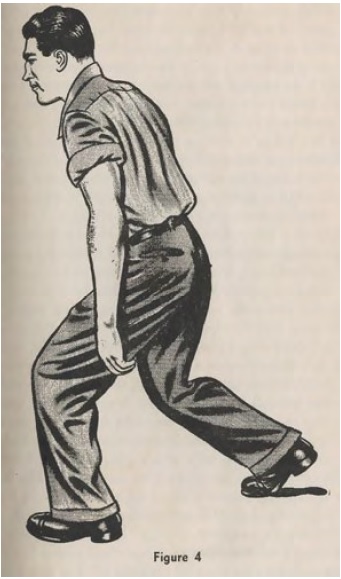
Illustrations of the falling step in Championship Boxing. I respect the style, but in no way endorse the use of dress shoes for boxing.
To perform a left jolt/power jab, Dempsey recommends using a technique he calls the “falling step”. He describes this as moving from one’s stance into the punch by simply lifting the lead foot and letting your body fall forward (thus the name), before landing the punch and letting the lead foot recover.
This punch would have very little torso rotation and instead relies on using your bodyweight to produce force.
This concept of using bodyweight as the key source of punching force is of course well understood in the field and in research [3].
To transfer the bodyweight that the falling step sends into a target Dempsey writes that a boxer must use their “power line”, an imaginary line that runs from the knuckles, through the arm, and into the shoulder.
He repeatedly hammers home the concept of bracing the fist and arm for impact.
This key concept has gained a lot of press in recent years after the increased interest in effective mass during striking [4]. Effective mass in boxing is a puncher’s inertial contribution to punching force. That is, how much of their weight they can put behind a punch.
Dempsey inherently understood this concept like many other combat sports experts (Bruce Lee included), but his ability to simply explain how to perform and train this idea in his book elevates his contribution to the sport.
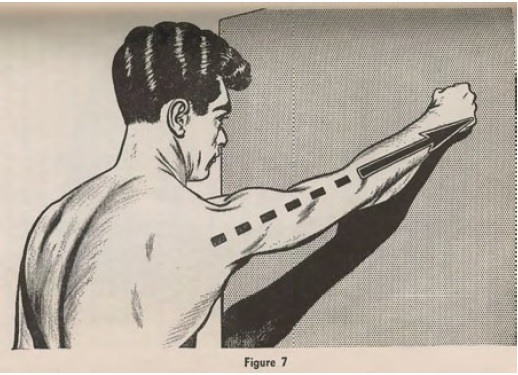
Dempsey’s interpretation of the power line. Note, this is also an excellent isometric exercise for improving punching performance. The folks at Boxing Science have been doing great work with isometrics for boxing and have tons of resources on their site.
How To Throw A Jab
The jab is the fastest and safest punch you can throw and is often used to get a feel of the distance to the opponent. While it may seem simple a good jab can make a huge difference in a fight. You may have heard the term “an educated jab” used quite often in professional boxing. This means the fighter uses his jab masterfully for multiple purposes.
Here is a step-by-step instruction by fighter and coach Plamen Kostov on how to throw a powerful jab. For ease of making the instruction, we will settle on an orthodox stance. For southpaw everything is the same, just replace left with right.
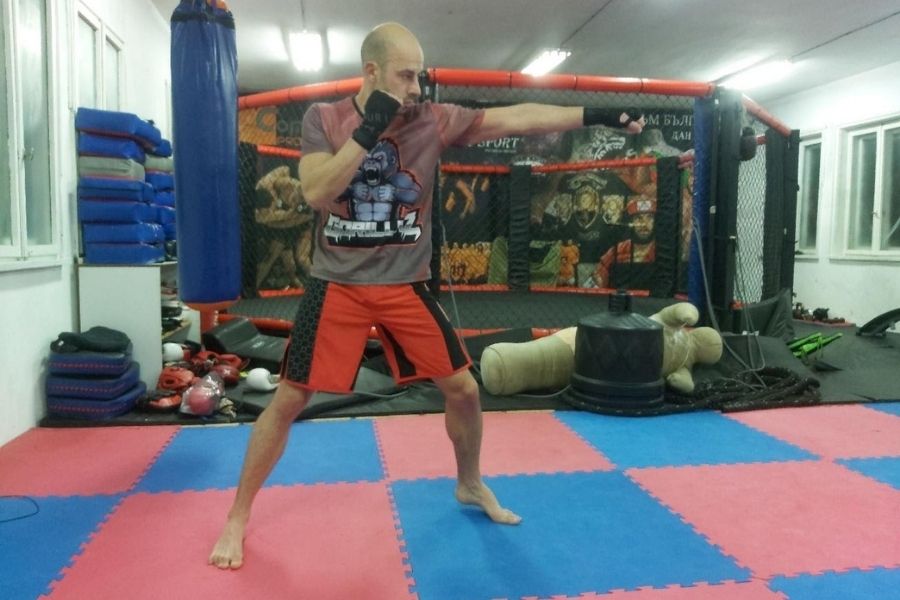
- From a proper guard make a small step forward with the left leg.
- At the same time perform a straight punch directly in front of you. The jab is a linear strike and it should travel straight to the opponent’s head.
- The hand travels with the knuckles facing up and the punch is turned over at the end of the motion just before it makes contact.
- Aim at the opponent’s nose or chin. Make sure that the arm is fully extended and the opponent’s head is just at the end of the punch. This way you get maximum range and power out of the jab.
- Retract the hand close to your head the same way it came. You may step back with the left foot to your original position.
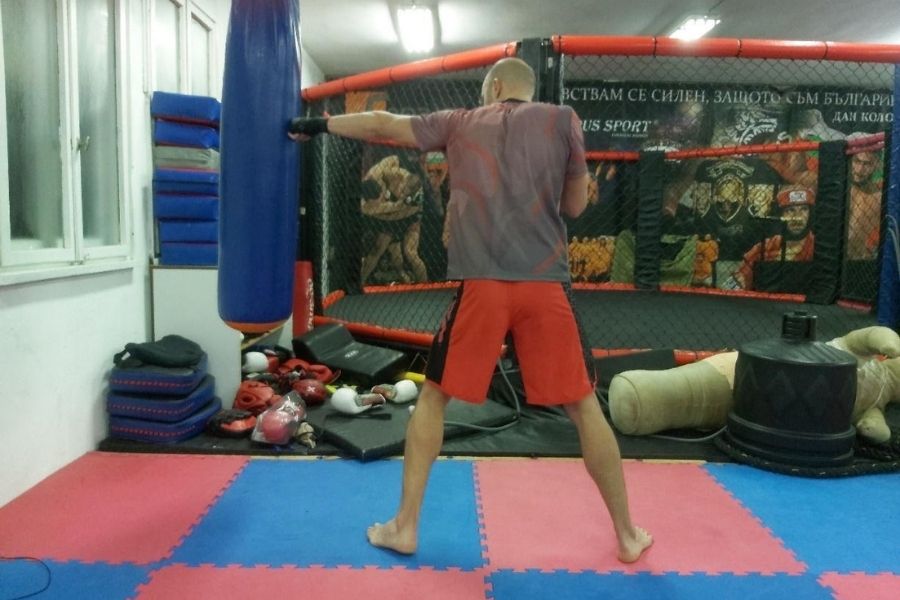
Common Jab Mistakes
While the jab may seem the simplest strike, some very common mistakes need to be avoided to use it effectively.
Flaring The Elbow
As we already mentioned the punch needs to travel straight to the opponent. The elbow needs to point to the floor for most of the movement until the punch is turned over just before making impact with the target. Keeping the elbow from coming up ensures the punch will have a much better chance of landing in between the opponents’ hands.
Not Lifting The Left Shoulder
The jab is the safest punch to throw, but nevertheless, your hand is still far away from the head and can’t protect it while you punch. To reduce the chance of getting hit in the vulnerable parts of your head make sure to tuck your chin while your left shoulder is protecting it. This becomes even easier if you turn the punch further.
Dropping The Hand After The Punch
The proper jab ends when the hand is back near your head. A very common mistake even amongst pro fighters is not returning the left hand the way it came. The proper form requires the left hand to return as quickly as possible directly to the head. Oftentimes beginner boxers first drop the hand down before returning it to the head which may be a very dangerous mistake.
Pushing Instead Of Snapping
The jab is a quick punch. A common mistake is trying to push with the hand rather than to punch with it. A good jab is an explosive punch, there is little merit in pushing with the hands instead of snapping the punch like a whip unless you are pushing the opponent to create distance.
Different Types Of Jabs
The basic jab we’ve been discussing thus far is the most commonly used one. But besides that, there are more ways to throw it. Here are some of them.
The Vertical Jab
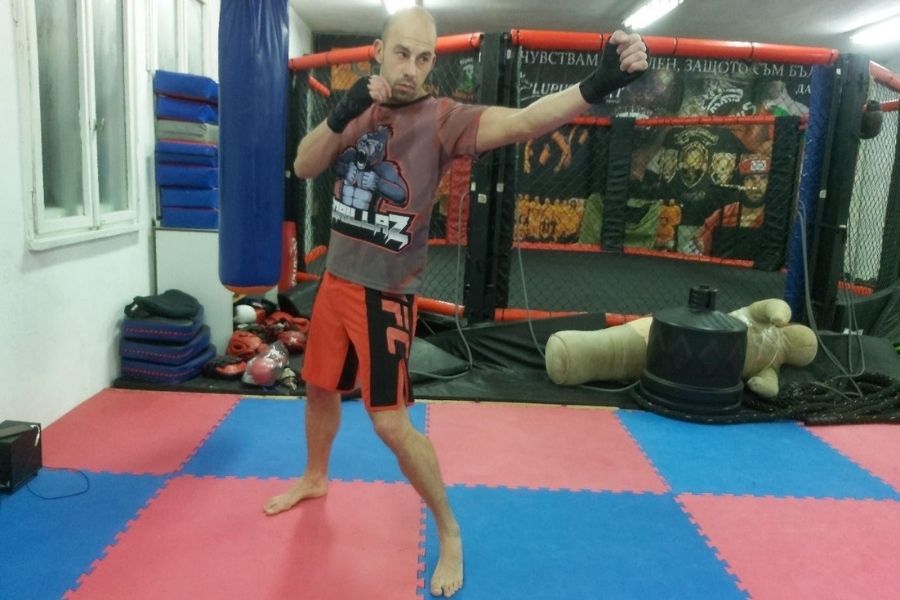
The best way to make the punch even smaller and have a better chance of splitting a tight guard is by throwing the vertical jab. This simply means that the hand is not turned before the contact but stays oriented vertically throughout the whole motion.
This way some power is lost, but the chance of the punch to land is higher. Many traditional martial arts styles actually prefer this technique for its speed.
Flick Jab
This technique is a bit more advanced because it requires the lead hand to be much lower than usual. The flicker jab is most commonly used in boxing and is performed when the lead hand is held around the waist.
The space the punch travels increases, but the hand is looser which makes it faster. At the same time, the trajectory of the strike is much harder to predict as opposed to the standard jab.
Body Jab
The body jab is a relatively safe way to score points, chip away at the stamina of your opponent. It’s also a perfect setup for the overhand right. If you condition your opponent to react to the body jab, he lowers his hands and opens his head for a powerful overhand punch.
The body jab is done like the regular one, but you must squat down while punching and aim at the midsection. Move your head to the right and off the center to avoid any possible incoming punches.
The Science Of How To Throw A Powerful Jab
A major component of my research was using force plates to monitor ground reaction forces during maximal punches.
In layman’s terms, this research examined how boxers used their lower body to produce punching forces and which component of the lower body was key to maximizing impact force.
The studies used a cohort of elite boxers that stood on the force plates and were asked to punch a bag as hard as they could using whatever technique they would normally use. When asked to jab as hard as possible the results matched closely to those defined by Dempsey’s falling step.
The boxers used a step towards the target, with timing and movement matching that described in the falling step.
Their lead leg touched down moments before their punch landed or as it landed, and they performed very little rotation throughout the movement.
Based on the data, it became clear that those with the strongest jabs had less weight on their rear legs as they prepared to jab.
Something Dempsey points out as he argues clearly against shifting weight back before throwing the lead hand.
Upon impact, those that did not stop their forward momentum also performed better. Dempsey was right again. “Falling” was a key to the power jab.
The more active the boxers were upon landing in stopping their attacking motion, the less force they produced.
The other component of the research into punching force was the muscle activation patterns through a technology called electromyography. Like the lower body research, the examination of muscle activation found which muscles were most active during the punch and identified what pattern resulted in greater impact forces.
The results found one key point that differed from Dempsey’s description. There was muscle activity in the rear leg as it propelled the fighters towards the target.
Although, the keys for maximizing the power jab were all related to stiffening the attacking arm.
Not rotating the torso or driving forward with the legs.
The lats were used to stabilize the shoulder joint and triceps to stabilize the elbow.
There were no measurements at the forearm, but I would put dollars to dimes that there would be similar results. The power line delivered and my hopes of showing up The Manassa Mauler and his ilk were dashed. Jack Dempsey was right.
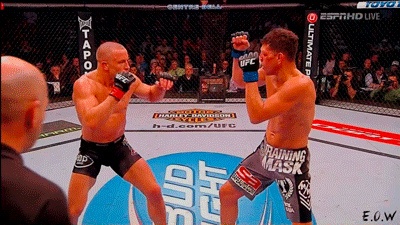
Summary
A powerful jab is the most important punch you need to master in boxing and is essential in every other striking art. It’s used to gauge the distance and to set up most other strikes. A good sturdy jab can even hurt the opponent if timed correctly.
The left jolt/power jab obviously has its limitations as it sends a fighter moving forward with great speed and can potentially leave you open for a counter if an opponent is able to cut an angle or slip effectively, but when used properly such a tool can be a valuable attack for any fighter.
To any aspiring sports scientist, learn from my experience, reinventing the wheel isn’t always a bad thing. Confirming the ideas of expert coaches and athletes adds to our knowledge of the sport as much as developing revolutionary concepts. The search for truth, even if it is a small truth relating to punching people in the face, is worth pursuing.
12 Weeks To Knockout Power!
Train like a professional boxer, develop knockout power, and dominate the ring!
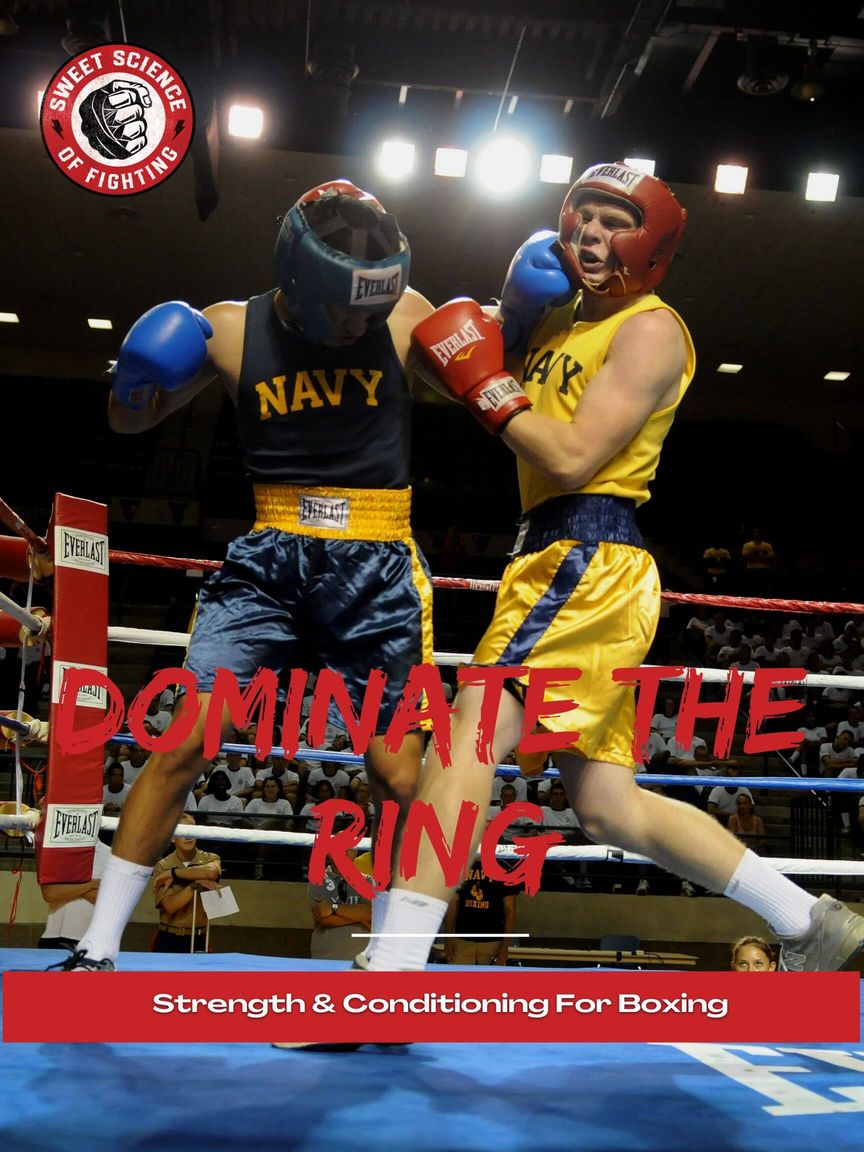

References
1. Dempsey, J. (1950). Championship Fighting: Explosive Punching and Aggressive Defense. Long Beach,CA: Centerline Press.
2. Lenetsky, S. (2018). Biomechanical Assessment and Determinants of Punching in Boxers. (PhD), Auckland University of Technology, New Zealand.
3. Lindsay, R. S., & Lenetsky, S. (2020). The contribution of expert coaches’ experiential knowledge in understanding punching performance in boxers. Journal of Emerging Sport Studies, 3.
4. Lenetsky, S., Nates, R. J., Brughelli, M., & Harris, N. K. (2015). Is effective mass in combat sports punching above its weight? Human Movement Science, 40, 89 – 97.
5. Kruszewski, M., Kruszewski, A., Kuźmicki, S., Sklepiński, Ł., Kępa, G., & Landowski, K. (2016). Boxing techniques based on the analysis of boxing tournament finals during Olympic Games in London in 2012. Journal of Combat Sports and Martial Arts, 7(1), 61-66.

